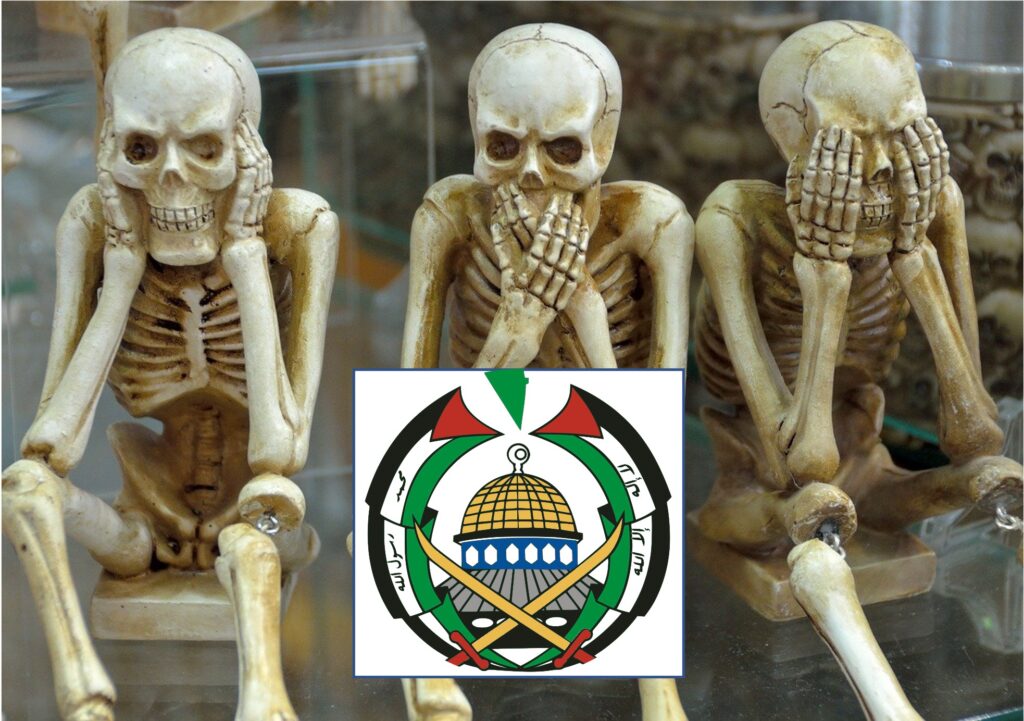About $ 100 million a year Hamas manages to flow into the Gaza Strip in creative ways to fund its activities against Israel – A Globes survey reveals the methods – ranging from Hamas’ use of real estate deals and holding companies in Turkey, through innocent donations to humanitarian aid that turn into money for the purchase of weapons; And to the use of cryptocurrencies.
During Operation “Wall Guard” in May this year, Hamas launched thousands of rockets of various types deep into Israeli territory, some of them sophisticated and expensive. The value of these – tens of millions of dollars. Hamas’ underground tunnel system in the northern Gaza Strip, the “metro” that was bombed by the IDF and later discovered, also revealed capabilities estimated to have been estimated at many millions of dollars over the years. Continues even these days.
What are the sources of funding that enable Hamas to finance its terrorist activities? Who are the countries on which Hamas bases this funding?
A Globes survey based on talks with Israeli and foreign security officials shows that Hamas, along with the civilian government ministries in the Gaza Strip, has had a branched international economic arm for more than two decades, with assets worth half a billion dollars and its center in Turkey. The money managed in the economic arm includes various types of companies, real estate holdings, investment funds and also “charitable” organizations that collect money ostensibly for humanitarian purposes.
The annual return on all of these is estimated at $ 100 million and is invested in the organization’s terrorist activities – including the purchase and production of rockets and other weapons, the construction of the tunnel system, and the maintenance of terrorist cells in various parts of the world. This is not all of Hamas’ terrorist budget – this amount is added to aid in weapons and rockets and in other forms provided by Iran through the Revolutionary Guards to Hamas.
In doing so, Hamas imitates similar organizations, such as Hezbollah, which finances itself, among other things, from international trade in drugs, weapons and other goods, along with “legit” economic activity in companies and organizations whose connection to the terrorist organization is disguised.
.
Fundraising, money laundering, transfer into the Gaza Strip
As you may recall, Hamas is defined as a terrorist organization in the United States, the European Union and other countries around the world. Through the legally registered companies, and with the close assistance of the Turkish government, the organization continues its fundraising activities, laundering, managing them and transferring them to the Gaza Strip almost unhindered.
Why almost? Those who do “interfere” with this economic activity are Israel’s intelligence and security organizations – the GSS, the Mossad, the Armed Forces, the National Economic Warfare Headquarters in the Ministry of Defense and other bodies. Interception of the information reveals the ways in which the funds are transferred and prevents what has been located, while at the same time transferring the information to the various countries in order to activate them to stop supporting the terrorist organization.
In the past year, tens of millions of shekels that were on their way from abroad were located and confiscated by Hamas’ military wing – a damage estimated at tens of percent of the organization’s budget.
.
Out: Saudi Arabia stops funding Hamas
Until recently, Hamas’ centers of economic activity have been spread over several countries in the region, including Saudi Arabia, Sudan, Jordan, the United Arab Emirates, Algeria and more. However, thanks in part to Israel’s warming with the Gulf states and the climax with the Abrahamic Agreements, activity in most countries has been reduced or eliminated. For example, Saudi Arabia, which since 2017 began to reduce the activities of Hamas companies in its territory until the large-scale arrest operation two years ago, and the closure of all companies that had ties to the Palestinian terrorist organization in its territory.
This was done, among other things, with the encouragement of the Trump administration, and to keep Saudi Arabia away from the accusations of the involvement of its citizens in the 9/11 attacks in the United States.
This is far from obvious. Two decades ago, more than half of Hamas’ money came from Saudi sources, money defined as “compensation” or “pensions” for the families of the suicide bombers. Saudi officials even spoke out at the time in favor of Hamas’ suicide bombings.
The remarks calmed down and money dwindled after the 2001 terrorist attacks in the United States. But even years later, the Saudis were considered terrorist financiers, including Hamas-led terrorism. Terrorist organizations “raise millions of dollars a year from Saudi sources, often during the Hajj pilgrimage.”
Since then, the Saudis have been sentenced to lengthy prison terms (up to 22 years in prison) of 64 Hamas operatives, exposing their money laundering and smuggling mechanisms to Hamas-Gaza. Among those sentenced to a long prison term (15 years) was also a senior Hamas figure, Dr. Muhammad al-Khodri, 80, who for 30 years headed a Hamas delegation to Saudi Arabia.
By the way, the Saudis received the information about Hamas’ secret economic activities, among other sources, from Israeli intelligence sources.
.
In: Turkish financing under the auspices of real estate projects
The Abraham Agreements led to a rapid reduction in Hamas activity in the Emirates, and last summer Sudan also joined. Authorities confiscated at least 12 Hamas-affiliated companies. Hamas’ assets included real estate, shares in companies, a hotel in the center of the capital Khartoum, a money exchange office, a television station and huge agricultural areas.
Hamas’ response? The organization, which in the last decade has created a very broad power base in Turkey, has transferred most of its economic activity there – as mentioned, with the encouragement and blessing of the authorities.
Hamas owns dozens of commercial companies in Turkey, with a focus on real estate and infrastructure. But also, money management and exchange companies used to transfer funds between the organization’s branches, including the Gaza Strip. They report to the tax authorities, but they are controlled by Hamas’s members who hold key positions in the managements of these companies.
The prominent holding company is called Trend Gyo, which specializes in real estate investments and development, and is traded on the Istanbul Stock Exchange. It changed names and listings after the Saudis closed its parent company, Anda.
An investigation by the Reuters news agency revealed the Hamas membership and investment portfolio, which is concentrated in Turkey and includes dozens of companies, as well as the goals to which the organization transfers the profits.
According to the investigation, there are nine Hamas operatives who are members of more than 18 “commercial” companies. One Hisham Yunis Kafisha activist is registered as an owner / shareholder / member of the boards of directors of 13 different companies, all of them Hamas.
Navigating the activity is Hamas’ unofficial “finance minister,” Zohar Jabrin, a Hamas operative from Samaria who was imprisoned in Israel and released in the Gilad Shalit deal. Jabrin himself is listed as one of the directors and owners of several of these companies. He received a permanent residence permit from the authorities in Ankara, and from information obtained by Globes also enjoys direct contact with the security arms of Turkey. This connection is necessary to warn him of harm or arrest by Israel or the United States, which also defines him as wanted.
Jabrin’s name came to light when a Hamas cell targeted by him from Turkey was exposed, which included, among others, an Arab-Israeli from Umm al-Fahm named Darem Jabrin. A lot of money was transferred to Darem Jabrin from a Hamas company in Istanbul called IMES, and upon his return to Israel, he transferred it to Hamas squads in Judea and Samaria. When he was apprehended by the security forces in Israel, he first claimed that he was operating in a legitimate business framework with the same company, but later admitted.
The person who maintains direct contact with the Turkish authorities is Jihad Ya’amor, who was involved in the abduction and murder of the late soldier Nachshon Waxman and was also released as part of the Shalit deal.
.
1st Method: Use money changers to finance transactions
One of the methods Hamas uses to transfer funds is through trade, and seemingly innocent civilian imports into the Gaza Strip. Gazan traders are buying goods in Turkey, with Hamas’ exchange and finance offices there financing the deal. The Gazan trader transfers the monetary proceeds from the goods he sold to Hamas exchanges in the Gaza Strip – this is how the money gets into the Gaza Strip.
Israel’s way of fighting this is through identifying and locating the same money changers and finance ministries used by Hamas in the Gaza Strip and Turkey. In this way, a shipment of 230 tons of sugar was confiscated at the Kerem Shalom crossing in July this year, after it became clear that one of the large exchange offices working with Hamas in the Gaza Strip was involved in the purchase deal – which actually served as a kind of Hamas bank. The seizure and confiscation of the goods and money is legally possible only after the declaration of those exchangers and their membership as a terrorist organization or its affiliate.
The biggest changer of all – in fact Hamas’ chief banker – was Hamed al-Khoudri. He was killed in a shooting at his car in June 2018. Today the best-known office is the Arab-al-China company of the money changer Zohir left Gaza.
.
2nd Method: Money transfers to the Strip in crypto
A method of money transfer that was tried by Hamas but was largely neutralized is the use of crypto-digital currencies. Already two years ago, attempts were made in Israel to raise and transfer funds using Bitcoin. Israel acted against this move and it faded, but during the “Wall Guard” operation the attempt was renewed.
The simple idea of crypto wallets – without suitcases or goods – seems to be the easiest way to transfer money to the Gaza Strip under Israeli supervision. But most of these wallets left marks and were identified, the information was passed on to international trading venues and law enforcement and securities authorities. Some of the wallets were confiscated. According to estimates in Israel, at least $ 7 million was frozen in May and June this year alone. In Israel, it is said that the global supervision of the crypto market, which is focused on money laundering and criminal activity, has greatly helped to harm this channel of money transfer.
.
3rd Method: Establishment of charities for “charity”
Well-known Hamas figures, Ismail Haniya and Khaled Mashaal, are also involved in the management of the companies, but focus on another branch of Hamas’ economy: the “charity” organizations – entities that raise tens of millions of dollars a year. The two, by the way, live in luxury apartments in a luxury complex in the suburbs of Doha, provided to them by the host country Qatar. They are surrounded by large entourages, travel in luxury vehicles and fly first class, and live a life of luxury – which is sometimes criticized by the Palestinian street. Haniya, by the way, left the Gaza Strip two years ago with a promise to Egypt that he would not visit Iran, but the promise was almost immediately broken – and Haniya worked to establish the link between Hamas and the Iranian Revolutionary Guards.
Israeli security sources noticed that during Operation Wall Guard, the activity of Hamas “charity” organizations around the world increased dramatically. The goal presented to donors around the world, especially to Muslims: the civilian rehabilitation of the Strip, assistance to needy families and the construction of houses destroyed in the various operations.
But that money goes directly to Hamas’ military coffers. One of those charities known as Nur, it has offices in Gaza and Istanbul and raises money to care for Hamas prisoners. But in practice a significant portion of the money goes to the organization’s military coffers and finances terrorist activities and the acquisition of weapons.
Another fundraising center for Hamas is in Muslim Malaysia, where two organizations – “Palestinian Artist” and “Pikum” – are responsible for fundraising through activities that take place mainly in mosques. Along with wealthy businessmen, many of the donors are simple people, believing Muslims, who think their money goes to poor Gazan families, or those who have been harmed in the conflicts with Israel.
Such associations and organizations also operate at the diplomatic level and in many places they have pushed for representatives of the Palestinian Authority. They present themselves as representatives of the Palestinians, and form contacts with local parliaments, and governments, as well as with the Palestinian communities in European cities.
Hamas’ economic activity is also extensive on the European continent – with the focus being on Britain. A senior Hamas figure named Muhammad Swalha, who was one of the founders of Hamas’ military wing in the West Bank, now lives in London. Svalha operates the IRW organization in the UK (Islamic Relief Worldwide) which allegedly collects charitable funds for the Palestinians in Gaza and the West Bank, but was already declared a terrorist organization in Israel due to the transfer of funds to Hamas’ military wing. Both Interpol and the Americans have joined the announcement, the British are procrastinating.
Diplomatic sources in Israel say that the issue comes up in every conversation with the British leadership and that there has been a recent shift. But even when this or that organization is declared a terrorist organization and their activity is stopped, Hamas establishes alternative organizations, cover organizations, that disguise the connection to the Palestinian terrorist organization. Three such organizations will soon be declared terrorist organizations after Israel succeeded in proving to several European governments that they were in fact a conduit for the flow of funds to Hamas.
The collection of information about the organizations is done in a variety of ways, with the technological methods that have become a central part of the work of Israel’s intelligence organizations slowly occupying the main share. In the GCC, for example, about a third of the organization’s manpower in the technological divisions and the combination of their work in the field work prevented almost 600 attacks against Israelis.
Europe, according to Israel, is responding more and more to Israeli inquiries on the subject. The security and economic enforcement arms in Austria carried out an extensive operation against Hamas and the World Muslim Brotherhood, relying, among other things, on information passed to them from Israel. A similar activity took place in Germany and was aimed mainly at an organization called al-Ansar, which raised funds for Hamas. In this activity, assets amounting to millions of euros were confiscated. According to Israeli sources, there is a regular dialogue between the intelligence organizations of European countries and Israel that brings, among other things, this activity.
.
4th Method: Use of goods entering Gaza
Another important source of funding for Hamas’ terrorist activities in the Gaza Strip is physical merchendize entering the Gaza Strip – goods, oil, medicine and medical equipment, everything. Civilian aid and goods, which reach humanitarian needs or international ventures, even if they are ostensibly under international supervision by the United Nations, UNRWA or any other organization, are transferred in part or in full to Hamas’ activities in creative ways. Thus, for example, according to Israeli security sources, international money that came to the program for paving roads in the Gaza Strip was mostly directed to paving roads to Hamas bases in various places, to its senior houses, and to the organization’s operational and administrative needs. The residents of the Strip benefit from these roads in a very partial way.
In this context, a senior security source tells Globes:
“Every shekel or cent that enters the Gaza Strip directly or indirectly assists the terrorist wing of Hamas – this is how the organization works and that is what it is aiming for”.
The remarks were made against the background of reports that Israel would allow an increase in civilian aid to the Gaza Strip, including money for civilian projects, the entry of construction materials and more.
.
The money confiscated: construction of infrastructure in Area C
Hamas is also conducting economic activity in the West Bank to fund its operatives there, and one main channel is again the exchange offices. The intelligence activity managed to track down several such offices in the past year, with the IDF and the GSS seizing millions of shekels in the last year alone. One of the big money changers from Ramallah, from whom about a million shekels were confiscated, petitioned the High Court – but the judges who spent the intelligence material rejected the petition, and 14 other similar petitions.
What is Israel doing with the confiscated money? In this case, at least, it has been transferred to the Civil Administration and is intended for use for current needs, such as building infrastructure for the Palestinians in Area C, which is under full Israeli control.
.
By Danny Zaken, October 15, 2021 Published in Globes
By http://www.palestine-info.info/Ar/DataFiles/Contents/Files/Images/mainpage/hamas_logo100.gif, Fair use, https://en.wikipedia.org/w/index.php?curid=52868419






